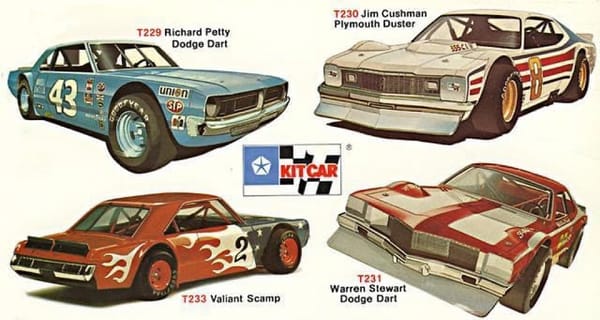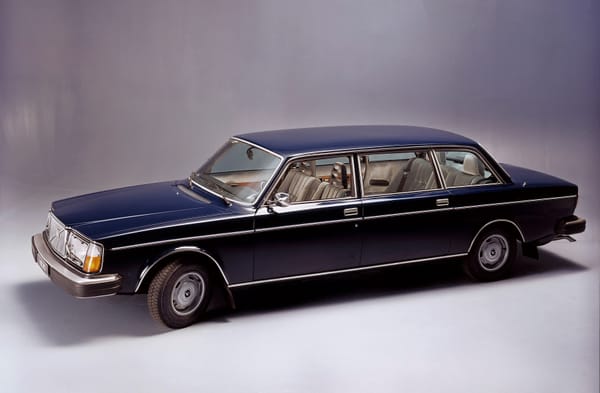How every autonomous car is related to a golf green 1972 Italian concept
Mario Bellini predicted MPVs, Vanlife, and autonomous pod-cars
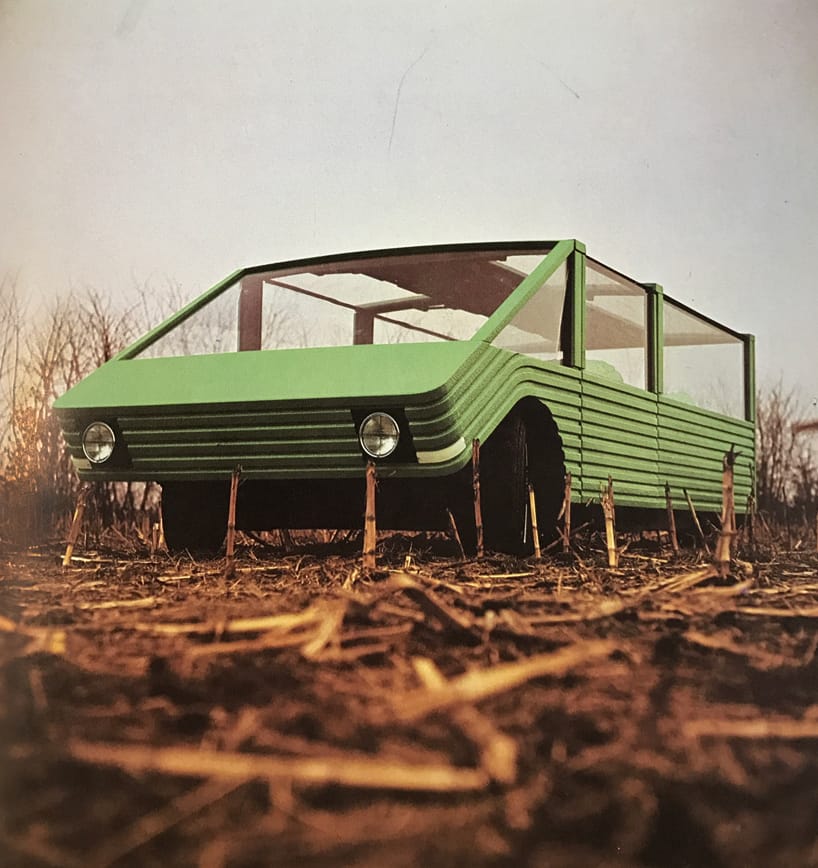
An Objet D'art in 1972. An Object d’Scussion today.
Because as silly as it is to see mimes frolicking around in a bright-ass green Citroën shaped like—Devil’s Advocate here—an Olivetti Dumpster, the Kar-A-Sutra is really where we’ve steered humanity’s mobility.
Brightly-colored boxes.
I watch tiny home stuff, I’m up on #vanlife, but more relevant to the world at large, humans are increasingly being forced to build their lives from within ever-shrinking homes like nano flats, banjiha apartments, workers’ shanties from Dubai to Florida, for lack of any alternatives.
Does anyone willingly downsize into a Bedspace apartment?
Note: this was originally published on NMNC, an archive of which I am updating and rebuilding on the site for paid subscribers to have access to. I’ve made this one open to everyone to read and will continue to do the same from time to time…
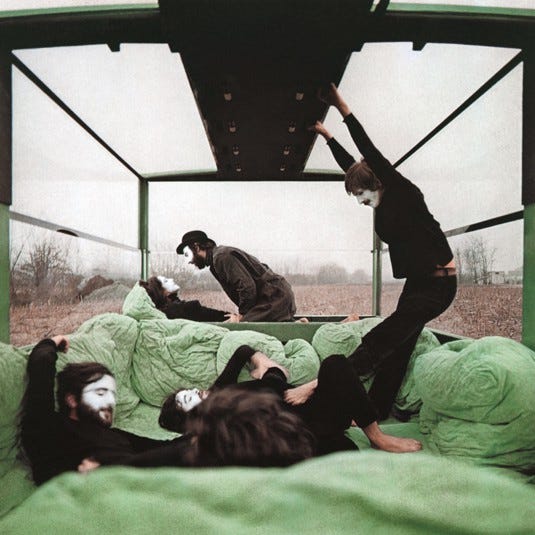
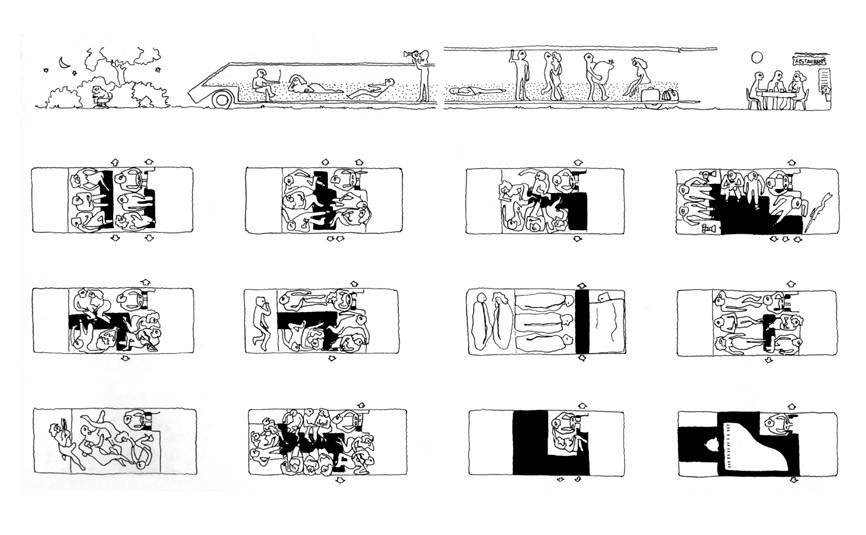
All images / rights for the Kar-A-Sutra go to bellini.it
Maybe, however, combining a low-cost vehicle with retractable roof—for security while parked—and reconfigurable interior like the Isuzu Zen—could it be…is the Kar-A-Sutra making more sense to you now?
Vehicles that emphasize their interior above all else are few and far between, and it took a collaboration between an architect, a furniture company, Pirelli, and Citroën to produce the Kar-A-Sutra.
When you consider its year, 1972, this concept predates every MPV, from the Mitsubishi Chariot/Space Wagon to the Renault Espace, both long considered the first modern MPVs.
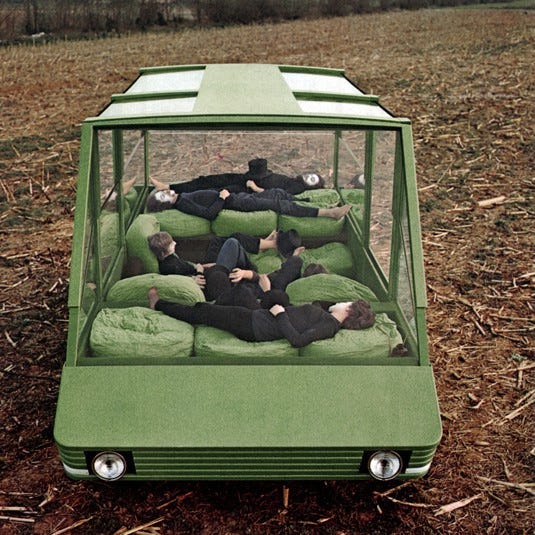
Top to bottom: its retractable roof, design sketches, and the interior filled to capacity, with the roof in “living” mode.
Envisioned as a part of a larger transportation network, Kar-A-Sutra was unveiled for a 1972 MoMA exhibition titled “Italy: The New Domestic Landscape.”
Without a bathroom or kitchen, it's not an RV; it's more a temporary living space that can be reconfigured as needed.
That tells you a lot about who designed it and the general themes for why things look the way they do—sadly, I couldn't find explanation anywhere for the mimes—but the Kar-A-Sutra is more than just a massive 20-foot-long art piece.
When you consider its year, 1972, this concept predates every MPV, from the Mitsubishi Chariot/Space Wagon to the Renault Espace, long considered the first modern MPV.
Is the Kar-A-Sutra what inspired car designers to invent the MPV?
I'd sure love to think so, since this Big Green Lovemobile was non-functional but said to be partly based on the Citroën DS—a revolutionary vehicle in its stock form, to say nothing of the mobile living room you see here.
Do you think if this had been refined we’d have arrived at our pod future even faster?
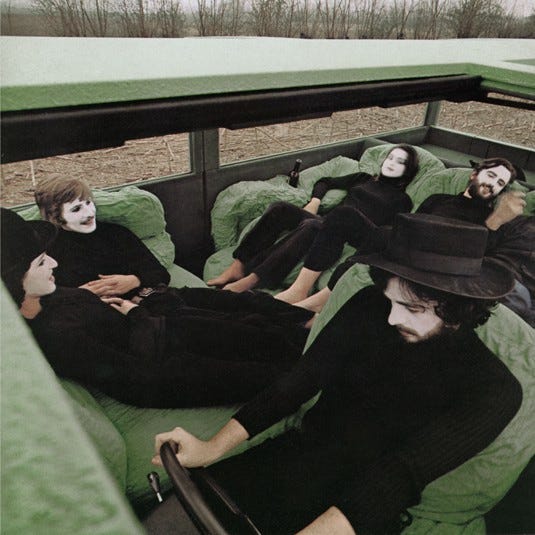
Designed with a movable roof to increase living space, the Kar-A-Sutra could grow from a driving height of four feet, up to a stationary height of seven feet.
Once raised, the interior fittings—er, cushions—could be moved around as needed.
“To stretch out, sleep, smile, chat face-to-face, stand up, enjoy the sun, take photos, play cards, eat and drink, make love, buy a horse and a piano along the way... Forerunning the future, the car becomes a MOBILE HUMAN SPACE.” -bellini.it
If living in close proximity becomes untenable and the people can’t have much space, perhaps it can at least be a soft, supple, velveteen, Hydropneumatically-sprung one?
Who’s next to design a vehicle that’s better at being parked than on the move?
Thank you for reading!! This post is public so feel free to share it.
More
Sources: Mario Bellini project website – bellini.it; mario bellini speaks to designboom about his 1972 'kar-a-sutra' concept car – Designboom (2017)




